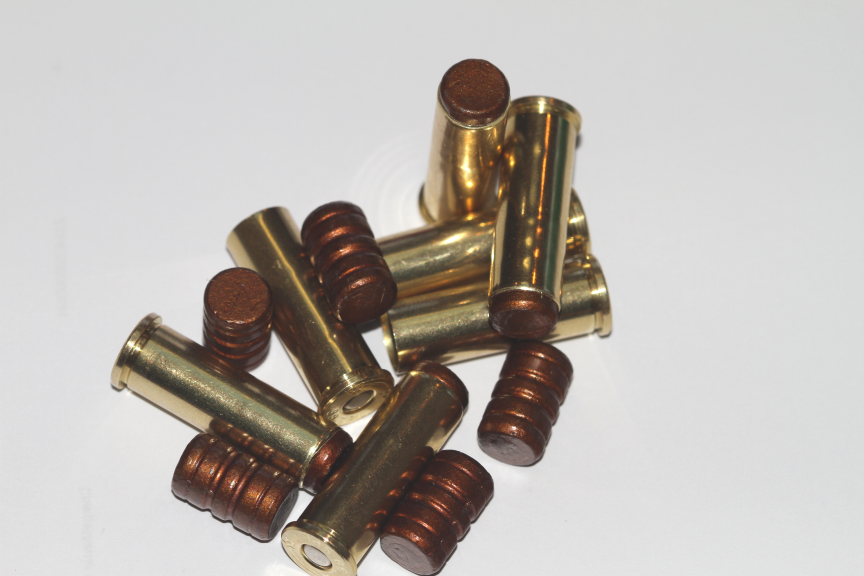One guy's approach . . .
Ahh, to crimp, or not to crimp, that is the question . . .
And then there's taper crimp, roll crimp, purpose, bullet used, firearm used, etc . . .
I load/shoot a lot of 38 Special. I seat and crimp in separate steps; but I would admittedly be less inclined to do so without my progressive press. Before I went progressive, I would seat/crimp in a single step in a lot of cases.
However, even on a single stage, I would seat and taper crimp plated bullets in separate steps. The thin plating is a bit delicate to do in a single step.
Most lead, you can seat and roll (or taper) crimp in a single step. But I think separate steps is always preferable because lead shaving is a real thing.
I have a Dillon 550. It's a 4-station progressive; which is one more station than I'll ever need. I recondition brass and do the actual loading in separate processes - to me, they are two different things and I'll likely never merge them. I have separate reconditioning and loading toolheads set up for each caliber. So when I'm at the press, I'm either reconditioning brass, or I'm loading - one or the other; but never both. (I hand prime and powder charge on loading blocks, btw.)
When I'm loading 38 Special, with the first station, I have a taper crimp die; the die body is set to just take out a little bit of the case flare upon seating.
The second station is also a taper crimp die (it's just the die body - there's no seater in it); and it does just that: Puts a medium taper crimp on the round. So all 38 Special ammo that I load get this treatment.
The third station is a Lee Factory Crimp Die (roll crimp). I may or may not engage the roll crimp - depending on the ammo being loaded.
With lead, I usually put a light roll crimp. But sometimes I don't and just leave them as taper crimped ammo. With plated, I completely disengage the roll crimp, so the only function of the FCD is the collar at the base that'll iron out any brass distortions over the bullet (rare). With jacketed (which will always be +P rounds), I usually put in a medium roll crimp with the FCD.
Ahh, to crimp, or not to crimp, that is the question . . .
And then there's taper crimp, roll crimp, purpose, bullet used, firearm used, etc . . .
I load/shoot a lot of 38 Special. I seat and crimp in separate steps; but I would admittedly be less inclined to do so without my progressive press. Before I went progressive, I would seat/crimp in a single step in a lot of cases.
However, even on a single stage, I would seat and taper crimp plated bullets in separate steps. The thin plating is a bit delicate to do in a single step.
Most lead, you can seat and roll (or taper) crimp in a single step. But I think separate steps is always preferable because lead shaving is a real thing.
I have a Dillon 550. It's a 4-station progressive; which is one more station than I'll ever need. I recondition brass and do the actual loading in separate processes - to me, they are two different things and I'll likely never merge them. I have separate reconditioning and loading toolheads set up for each caliber. So when I'm at the press, I'm either reconditioning brass, or I'm loading - one or the other; but never both. (I hand prime and powder charge on loading blocks, btw.)
When I'm loading 38 Special, with the first station, I have a taper crimp die; the die body is set to just take out a little bit of the case flare upon seating.
The second station is also a taper crimp die (it's just the die body - there's no seater in it); and it does just that: Puts a medium taper crimp on the round. So all 38 Special ammo that I load get this treatment.
The third station is a Lee Factory Crimp Die (roll crimp). I may or may not engage the roll crimp - depending on the ammo being loaded.
With lead, I usually put a light roll crimp. But sometimes I don't and just leave them as taper crimped ammo. With plated, I completely disengage the roll crimp, so the only function of the FCD is the collar at the base that'll iron out any brass distortions over the bullet (rare). With jacketed (which will always be +P rounds), I usually put in a medium roll crimp with the FCD.

